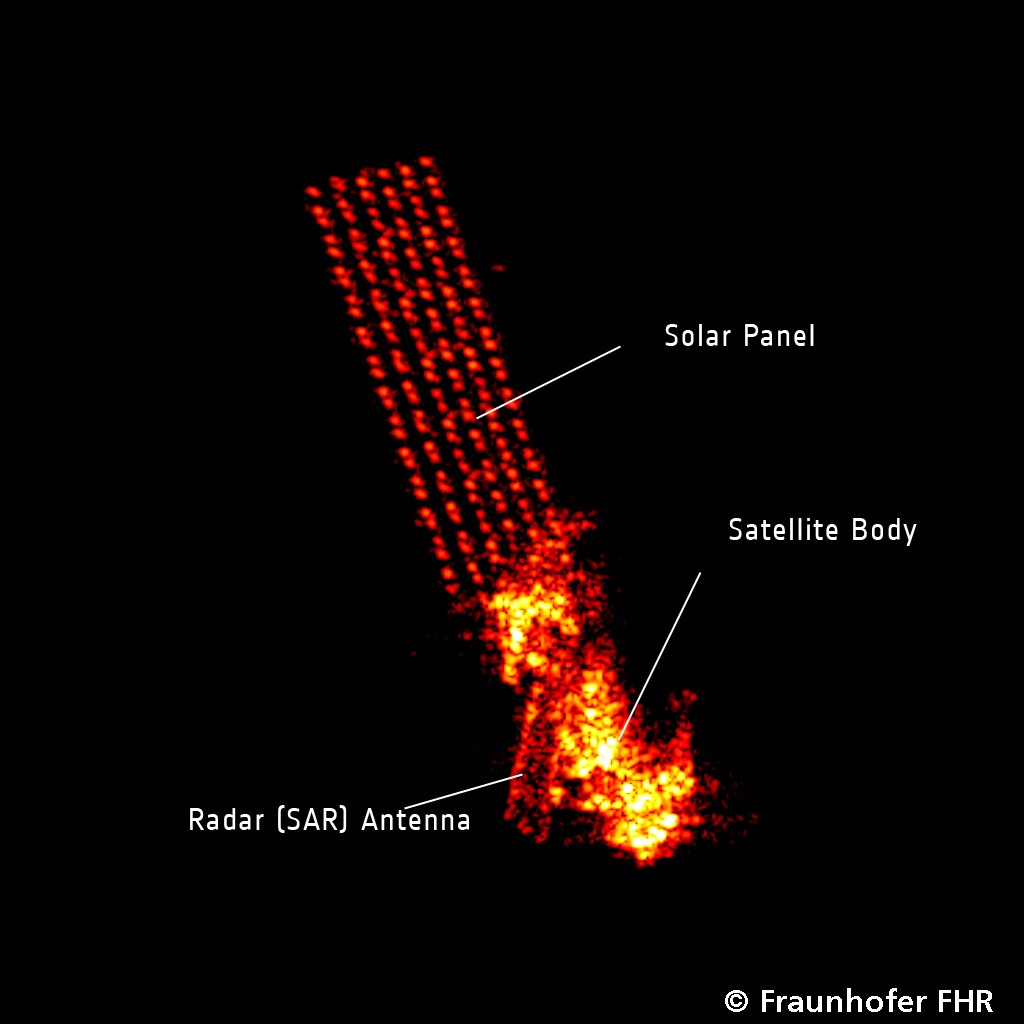Huge, Mysteriously Silent Satellite Spotted by Another Spacecraft

A massive European satellite the size of a school bus that has mysteriously stopped communicating with Earth has been spotted by another satellite in orbit.
The giant Envisat satellite, which is the world's largest imaging satellite for civilian use, was photographed in stunning detail by a French spacecraft that is also designed to snap high-resolution images of Earth, officials with the European Space Agency (ESA) said Friday (April 20).
The photo of Envisat in space reveals that the $2.9 billion spacecraft is intact and that its huge solar array is deployed. Envisat is a huge satellite that weighs about 17,600 pounds (8,000 kilograms). It is about 30 feet long (9 meters) and 16 feet wide (5 m), not counting the solar wing.
ESA satellite operators lost contact with the 10-year-old Envisat on April 8 and have been trying to revive the spacecraft ever since. As part of that rescue effort, ESA officials asked their international partners for aid in investigating the giant satellite's malfunction, and the French space agency CNES volunteered time with its new Pleiades spacecraft. [See Envisat's photos of Earth]
Like Envisat, Pleiades is an Earth-watching satellite designed to snap high-resolution images of the planet. Pleiades launched in December and is designed for use by military and civilian customers.
Pleiades snapped its detailed view of Envisat on April 15, when the two spacecraft passed within 62 miles (100 kilometers) of one another. ESA engineers are using photos from the encounter to determine if Envisat's solar array, which is 16 feet wide (5 m) and 46 feet long (14 m), is actually oriented in the right position.
If Envisat is in the right position, with its solar array collecting enough sunlight to power onboard systems, then it is possible that the satellite is in a protective state known as "safe mode," ESA officials said. That could make it possible to revive the satellite, they added.
Breaking space news, the latest updates on rocket launches, skywatching events and more!
"We are really grateful to CNES for offering to acquire images of Envisat using their Pleiades and Spot satellites," said Volker Liebig, ESA’s Director of Earth Observation Programs, in a statement. "Additional observations being acquired across the globe show how the international space community has come together to track this veteran satellite."
A ground-based radar station operated by Germany's Fraunhofer Institute for High Frequency Physics and Radar Techniques in Wachtberg have also captured images of the satellite to check its orientation in space.
"These unique images will enable us to analyze Envisat's orientation, which will indicate whether we are able to regain contact with the satellite," said Manfred Warhaut, head of ESA’s Mission Operations Department, in a statement.
In the United States, the U.S. Joint Space Operations Center is keeping tabs on Envisat's orbit to verify that the satellite is not falling out of space. Several laser-ranging ground stations are also monitoring Envisat's orbit, ESA officials added.
Envisat launched in 2002 and successfully completed its original five-year mission to snap ultra-detailed views of Earth. The satellite was in the homestretch of an extended mission when it unexpectedly went silent. It is equipped with 10 instruments, including cameras and radar, to observe the Earth.
The break in Envisat photographs since its communications dropout has interrupted data services to the international agencies and scientists that relied on the satellite's steady stream of data. Envisat was slated to be replaced in 2013 by the first in Europe's new fleet of Earth-monitoring Sentinel satellites.
"The Sentinels will provide the data needed for information services to improve the management of the environment, understand and mitigate the effects of climate change and ensure civil security," ESA officials wrote in a statement.
You can follow SPACE.com Managing Editor Tariq Malik on Twitter @tariqjmalik. Follow SPACE.com for the latest in space science and exploration news on Twitter @Spacedotcomand on Facebook.

Tariq is the award-winning Editor-in-Chief of Space.com and joined the team in 2001. He covers human spaceflight, as well as skywatching and entertainment. He became Space.com's Editor-in-Chief in 2019. Before joining Space.com, Tariq was a staff reporter for The Los Angeles Times covering education and city beats in La Habra, Fullerton and Huntington Beach. He's a recipient of the 2022 Harry Kolcum Award for excellence in space reporting and the 2025 Space Pioneer Award from the National Space Society. He is an Eagle Scout and Space Camp alum with journalism degrees from the USC and NYU. You can find Tariq at Space.com and as the co-host to the This Week In Space podcast on the TWiT network. To see his latest project, you can follow Tariq on Twitter @tariqjmalik.


